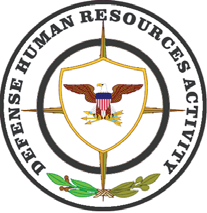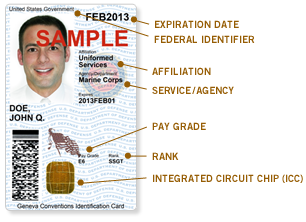Open-source journalism, a close cousin to citizen journalism or participatory journalism, is a term coined in the title of a 1999 article by Andrew Leonard of Salon.com. Although the term was not actually used in the body text of Leonard's article, the headline encapsulated a collaboration between users of the internet technology blog Slashdot and a writer for Jane's Intelligence Review. The writer, Johan J. Ingles-le Nobel, had solicited feedback on a story about cyberterrorism from Slashdot readers, and then re-wrote his story based on that feedback and compensated the Slashdot writers whose information and words he used.

A collaboration tool helps people to collaborate. The purpose of a collaboration tool is to support a group of two or more individuals to accomplish a common goal or objective. Collaboration tools can be either of a non-technological nature such as paper, flipcharts, post-it notes or whiteboards. They can also include software tools and applications such as collaborative software.

The Defense Human Resources Activity (DHRA) is a United States Department of Defense (DoD) Field Activity chartered to support the Under Secretary of Defense for Personnel and Readiness. The scope of DHRA's mission is very broad, giving the USD flexibility to explore and field new technologies and programs that benefit warfighters, their family members, as well as DoD civilians.

The common access card, also commonly referred to as the CAC, is the standard identification for active duty United States defense personnel. The card itself is a smart card about the size of a credit card. Defense personnel that use the CAC include the Selected Reserve and National Guard, United States Department of Defense (DoD) civilian employees, United States Coast Guard (USCG) civilian employees and eligible DoD and USCG contractor personnel. It is also the principal card used to enable physical access to buildings and controlled spaces, and it provides access to defense computer networks and systems. It also serves as an identification card under the Geneva Conventions. In combination with a personal identification number, a CAC satisfies the requirement for two-factor authentication: something the user knows combined with something the user has. The CAC also satisfies the requirements for digital signature and data encryption technologies: authentication, integrity and non-repudiation.
Computer-supported collaborative learning (CSCL) is a pedagogical approach wherein learning takes place via social interaction using a computer or through the Internet. This kind of learning is characterized by the sharing and construction of knowledge among participants using technology as their primary means of communication or as a common resource. CSCL can be implemented in online and classroom learning environments and can take place synchronously or asynchronously.

Intellipedia is an online system for collaborative data sharing used by the United States Intelligence Community (IC). It was established as a pilot project in late 2005 and formally announced in April 2006. Intellipedia consists of three wikis running on the separate JWICS (Intellipedia-TS), SIPRNet (Intellipedia-S), and DNI-U (Intellipedia-U) networks. The levels of classification allowed for information on the three wikis are Top Secret Sensitive Compartmented Information, Secret (S), and Sensitive But Unclassified information, respectively. Each of the wikis is used by individuals with appropriate clearances from the 18 agencies of the US intelligence community and other national-security related organizations, including Combatant Commands and other federal departments. The wikis are not open to the public.
Traction TeamPage is a proprietary enterprise 2.0 social software product developed by Traction Software Inc. of Providence, Rhode Island.
The Transformational Satellite Communications System (TSAT) program was a United States Department of Defense (DOD) program sponsored by the U.S. Air Force for a secure, high-capacity global communications network serving the Department of Defense, NASA and the United States Intelligence Community (IC). It was intended as an enabler of net-centric warfare that would facilitate defense and intelligence professionals making rapid decisions based on integrated, comprehensive information. In 2003, the estimated project costs for the period up to 2015 were estimated to US$ 12 billion (inflation adjusted US$ 19.9 billion in 2023). In October 2008, the DoD announced that it was postponing making a decision on choosing a contractor to build the system until 2010. In April 2009 Secretary of Defence Robert M. Gates asked that the project be canceled in its entirety.

The Under Secretary of Defense for Acquisition and Sustainment, or USD (A&S), is the Principal Staff Assistant (PSA) and advisor to the Secretary of Defense for all matters relating to acquisition and sustainment in the Department of Defense. This includes the DoD Acquisition System; system design and development; production; logistics and distribution; installation maintenance, management, and resilience; military construction; procurement of goods and services; material readiness; maintenance; environment and energy resilience ; utilities; business management modernization; International Armaments Cooperation, Cooperative Acquisition and International Agreements, Promoting exportability of military components to allies and partners; nuclear, chemical and biological defense programs; and nuclear command, control, and communications.
HCL Connections is a Web 2.0 enterprise social software application developed originally by IBM and acquired by HCL Technologies in July 2019. Connections is an enterprise-collaboration platform which aims to helps teams work more efficiently. Connections is part of HCL collaboration suite which also includes Notes / Domino, Sametime, Portal and Connections.

The Defense Technical Information Center is the repository for research and engineering information for the United States Department of Defense (DoD). DTIC's services are available to DoD personnel, federal government personnel, federal contractors and selected academic institutions. The general public can access unclassified information through its public website.

Diplopedia, billed as the Encyclopedia of the United States Department of State, is a wiki running on a State internal Intranet, called "OpenNet". It houses a unique collection of information pertaining to diplomacy, international relations, and Department of State tradecraft.
The Data & Analysis Center for Software (DACS) was one of several United States Department of Defense (DoD) sponsored Information Analysis Centers (IACs), administered by the Defense Technical Information Center (DTIC). It was managed by the U.S. Air Force Research Laboratory (AFRL) and operated by Quanterion Solutions Inc. under a long term DoD contract. This organization was consolidated into the Cyber Security and Information Systems Information Analysis Center (CSIAC).
Bureaupedia is a wiki used internally at the FBI with the intention of capturing the knowledge of senior agents and reduce knowledge loss due to retirement. Its existence was revealed in a September 2008 article in Federal Computer Week.
Live, Virtual, & Constructive (LVC) Simulation is a broadly used taxonomy for classifying Modeling and Simulation (M&S). However, categorizing a simulation as a live, virtual, or constructive environment is problematic since there is no clear division among these categories. The degree of human participation in a simulation is infinitely variable, as is the degree of equipment realism. The categorization of simulations also lacks a category for simulated people working real equipment.

The Air Education Training Command Collaboration Portal (ACP) provides collaboration services to the United States Air Force academic institutions and select training organizations. The Air Collaboration Portal has evolved and now provides other collaboration components such as blogs, wikis, and instant messaging to the U.S. Air Force.
Information Assurance Technology Analysis Center (IATAC) is a United States Department of Defense (DoD) Government Organization. IATAC is an Information Assurance and Cyber Security (CS) Information Analysis Center (IAC), which is administered by the Defense Technical Information Center (DTIC).
milSuite, launched in October 2009 by the U.S. Army PEO EIS milTech Solution office, is a collection of online applications designed to enhance secure collaboration for the United States Department of Defense. With a served user base of 2.21 million, milSuite is one of the largest networks for personal information sharing across the joint-domain. milSuite comprises ten applications, with its five primary applications being milBook, milWiki, milTube, milUniversity and milSurvey.
Cyber Security and Information Systems Information Analysis Center (CSIAC) is a United States Department of Defense (DoD) Information Analysis Center (IAC) sponsored by the Defense Technical Information Center (DTIC). The CSIAC is a consolidation of three predecessor IACs: the Data & Analysis Center for Software (DACS), the Information Assurance Technology IAC (IATAC) and the Modeling & Simulation IAC (MSIAC), with the addition of the Knowledge Management and Information Sharing technical area.
All Partners Access Network (APAN), formerly called Asia-Pacific Area Network, is a United States Department of Defense (USDOD) social networking website used for information sharing and collaboration. APAN is the premier collaboration enterprise for the USDOD. The APAN network of communities fosters multinational interaction and multilateral cooperation by allowing users to post multimedia and other content in blogs, wikis, forums, document libraries and media galleries. APAN is used for humanitarian assistance and disaster relief, exercise planning, conferences and work groups. APAN provides non-governmental organizations (NGOs) and U.S. partner nations who do not have access to traditional, closed USDOD networks with an unclassified tool to communicate.









